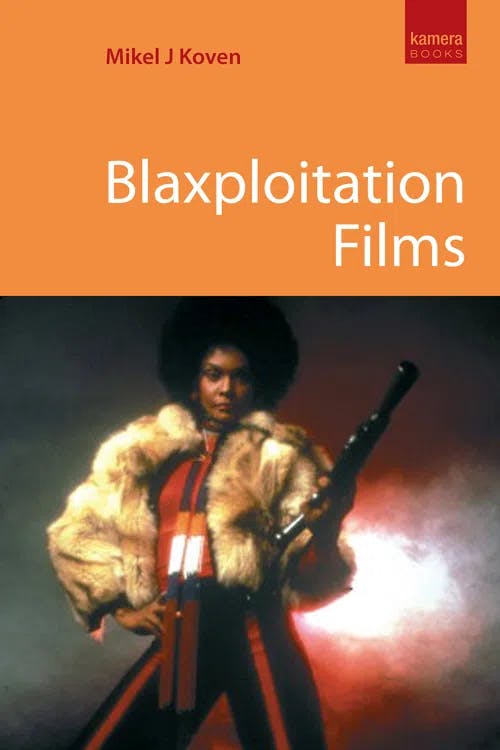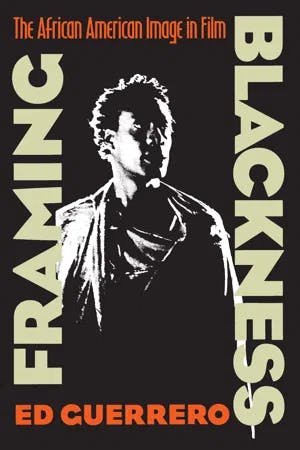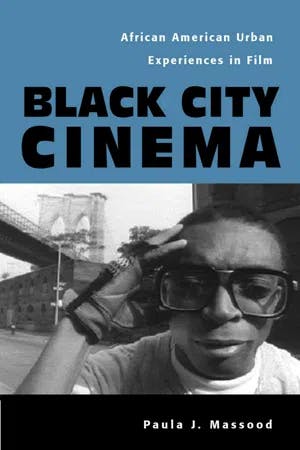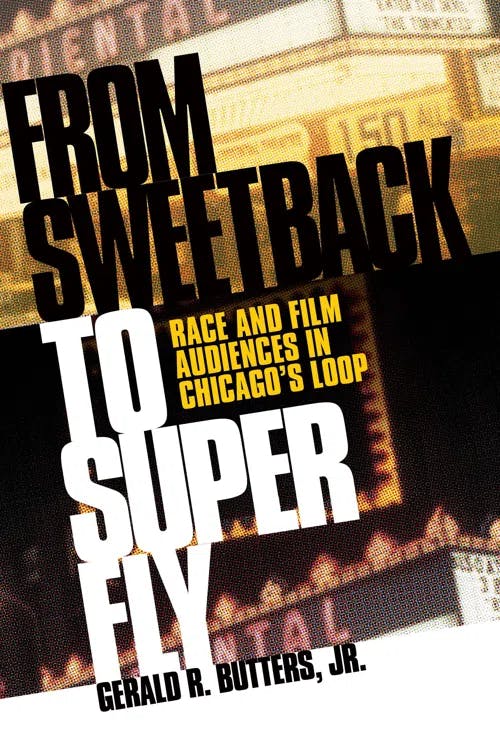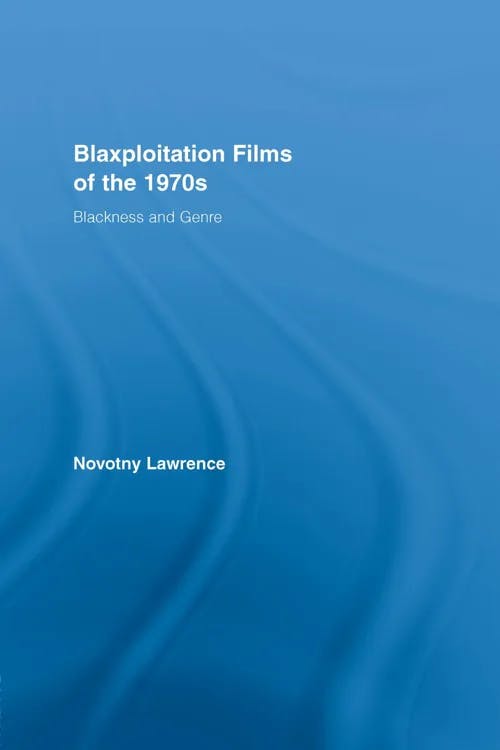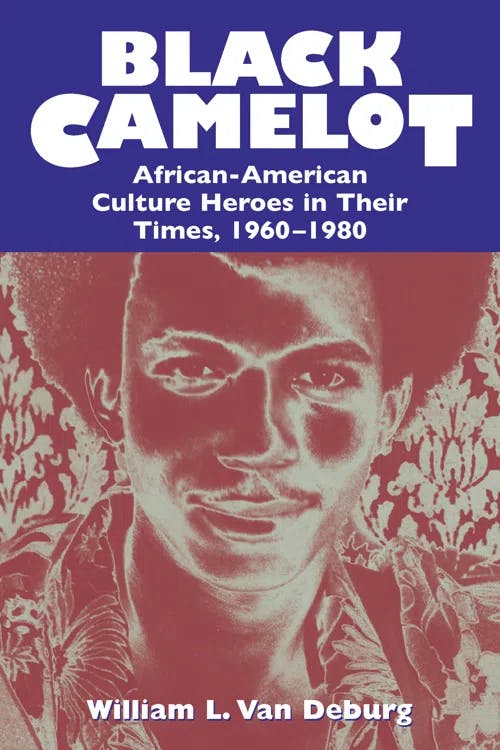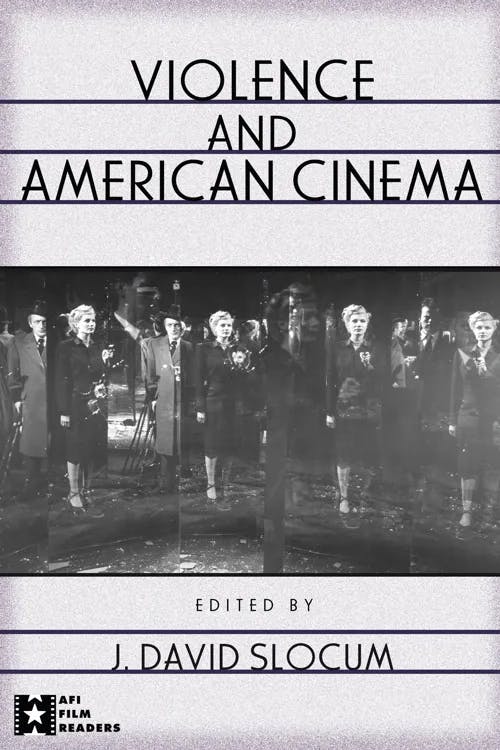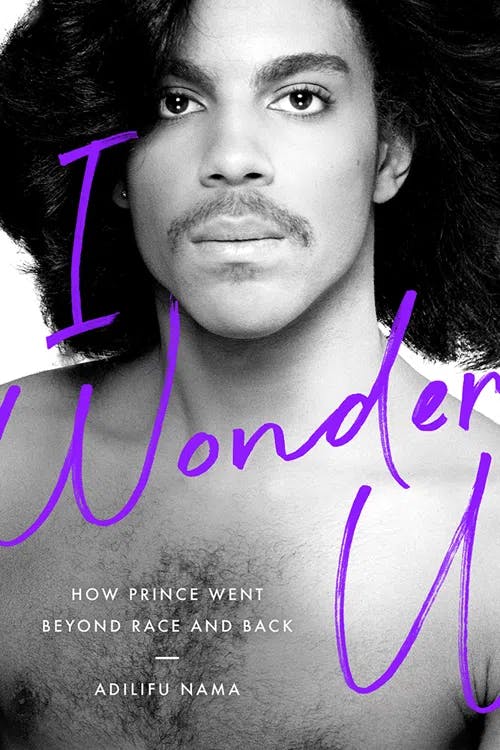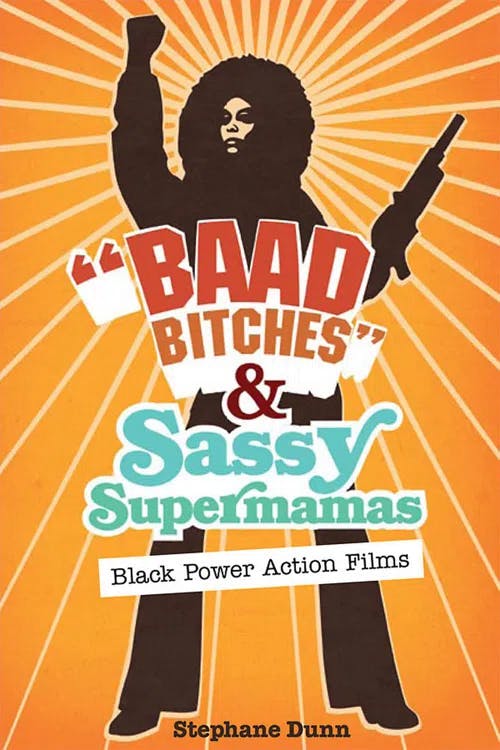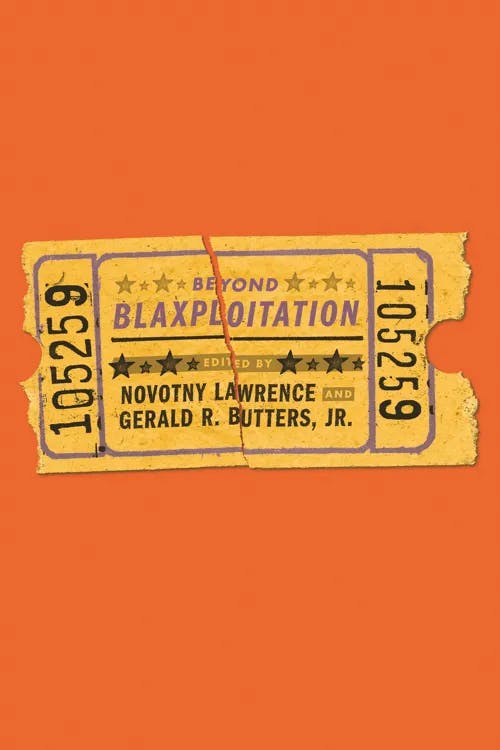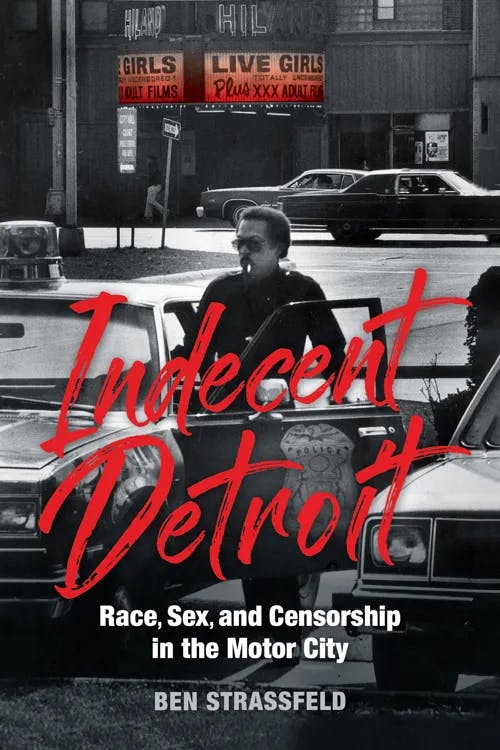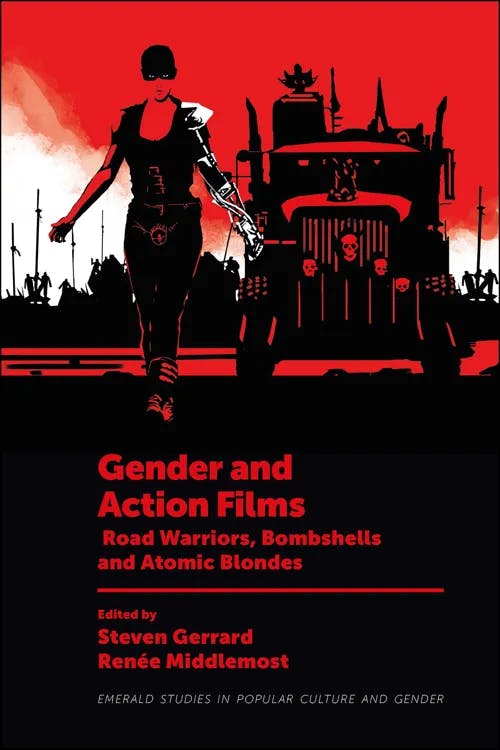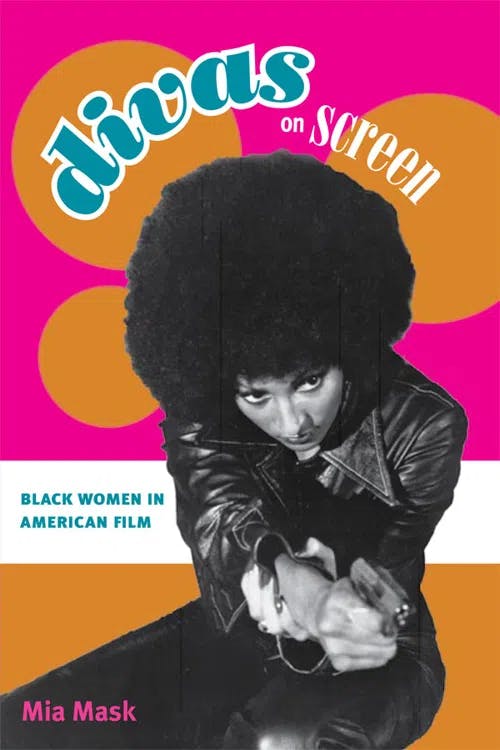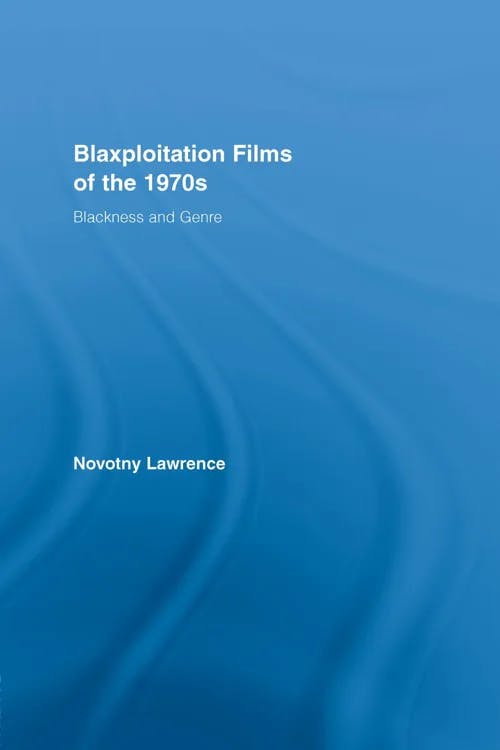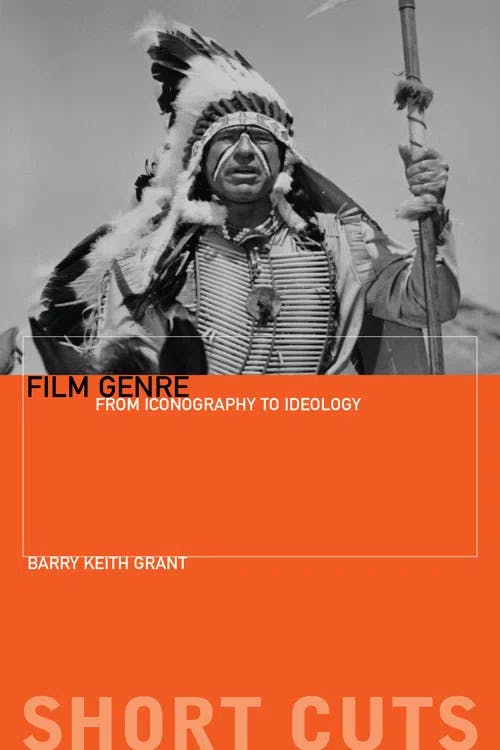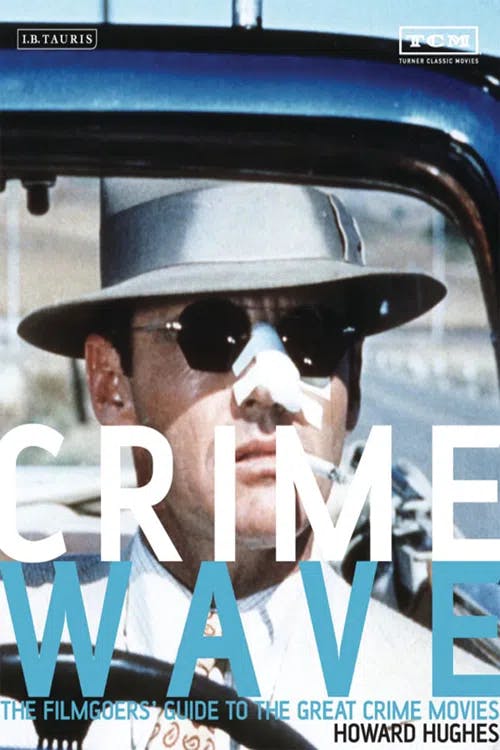What is Blaxploitation?
PhD, English Literature (Lancaster University)
Date Published: 23.04.2024,
Last Updated: 23.04.2024
Share this article
Definition and origins
Blaxploitation describes a wave of (often low-budget) films that cast Black actors in major roles and dealt predominantly with themes of crime, sex, drugs, violence, and racial conflict in an urban setting. In the 1970s, blaxploitation exploded onto the Hollywood screen, ushering in a new age of Black film stars and directors. These films were largely marketed to inner-city Black youth. While many of these were action films, blaxploitation also includes other genres such as the Western, like The Red, White, and Black (Cardos, 1970; later released under the name Soul Soldier) and horror such as William Crain’s Blacula (1972). For more on these genres, see Mia Mask’s Black Rodeo (2023) and Jamil Mustafa’s The Blaxploitation Horror Film (2023).
Many blaxploitation films follow the same template: a Black protagonist (usually a private detective, drug dealer, pimp, or vigilante) seeks vengeance on, or otherwise overcomes oppression from, white authority figures, typically using illegal or unorthodox methods to navigate white institutions.
The term “blaxploitation” (a portmanteau of black and exploitation) is credited to Junius Griffin, president of the National Association for the Advancement of Colored People (NAACP) as a criticism of this new wave of films which, he argued, were exploitative, violent, and contributing to Black stereotypes in cinema:
At present, black movies are a “rip off” enriching major white film producers and a very few black people. [...] Such films are the cancer of “Blaxploitation” gnawing away at the moral fiber of our community. (“Black Movie Boom: Good or Bad?” The New York Times, 1972)
Critics and activists debated over who was being exploited and by whom. Fred Williamson, star of blaxploitation films such as Black Caesar (Cohen, 1973) and Three the Hard Way (Parks Jr., 1974), made the following comments in the documentary Baadasssss Cinema (Julien, 2007):
NAACP and CORE [Congress of Racial Equality] – they’re the ones who created this terminology: black exploitation. That has to be clear, on the record. It came from them. It didn’t come from the white press. Who was being exploited? All the black actors were getting paid. They had a job. They were going to work. The audience wasn’t being exploited. They were getting to see things on their screen they’d longed for. (Quoted in Mikel J. Koven, Blaxploitation Films, 2010)
Mikel J. Koven
NAACP and CORE [Congress of Racial Equality] – they’re the ones who created this terminology: black exploitation. That has to be clear, on the record. It came from them. It didn’t come from the white press. Who was being exploited? All the black actors were getting paid. They had a job. They were going to work. The audience wasn’t being exploited. They were getting to see things on their screen they’d longed for. (Quoted in Mikel J. Koven, Blaxploitation Films, 2010)
Though the genre did reinforce, and even produce problematic stereotypes, blaxploitation offered new representations that revolutionized Black cinema; it placed Black characters at the center of the narratives, confronted systemic racism, and foregrounded Black experiences in the city. Ed Guerrero writes,
The rising political and social consciousness of black people […] translated into a large black audience thirsting to see their full humanity depicted on the commercial cinema screen. (Framing Blackness, 2012)
Ed Guerrero
The rising political and social consciousness of black people […] translated into a large black audience thirsting to see their full humanity depicted on the commercial cinema screen. (Framing Blackness, 2012)
Throughout this guide, we will explore the characteristics of the genre as presented in its most iconic films, and reveal how these films were received by audiences, at the box office, and by Black activists and critics.
The emergence of the genre
When blaxploitation emerged in the 1970s, it dramatically changed how Black people were represented on screen. Negative representation of Black characters in the twentieth century was rife as epitomized in the silent film The Birth of a Nation (Griffith, 1915). The film portrays Black characters (mainly white actors in blackface) as unintelligent, primitive, and sexually aggressive, particularly towards white women. The Birth of a Nation further perpetuates a romanticized version of the antebellum South. In Griffith’s revisionist retelling, slaves are depicted as being content to pick cotton and serve white slave owners in the plantation house. The idea of the content slave reinforced stereotypes like the “mammy” caricature: a submissive and nurturing Black woman who works in domestic servitude and loves her white “family.” (For more on these tropes and the mythology surrounding the antebellum South, see our guides “What is Black Feminism?” and “What is the Southern Renaissance?”)
The Birth of a Nation is widely regarded as one of the most racist films in Hollywood history and prompted outrage from Black viewers. As a result, Black independent film projects began with the intention of creating more positive and representative images of Black people and their experiences in the US.
From the 1940s to the 1960s, racial inequalities were explored in “message movies,” such as Home of the Brave (Robson, 1949). However, as Paula Massood writes in Black City Cinema,
[Message movies] depicted a world and conditions that existed outside those faced by the majority of rural and urban African Americans alike. [...] message movies constructed a world that acknowledged neither southern living conditions nor the continuing black migration to northern and western urban spaces. Nor were they to acknowledge the increasing association of the black city with a ghetto. (2011)
Paula Massood
[Message movies] depicted a world and conditions that existed outside those faced by the majority of rural and urban African Americans alike. [...] message movies constructed a world that acknowledged neither southern living conditions nor the continuing black migration to northern and western urban spaces. Nor were they to acknowledge the increasing association of the black city with a ghetto. (2011)
Moreover, while there was an increasing presence of Black actors on screen, Black male protagonists tended to be portrayed as “asexual, middle-class, and more rural or suburban than urban” (Massood, 2011). This was typified by the roles played by celebrated actor Sidney Poitier:
By the fall of 1968, though, even the Chicago Defender had to acknowledge the growing criticism of the roles and activities of Sidney Poitier. The Defender’s reporting of the change in attitude toward Poitier demonstrated the radically changing political situation within the black community in relationship to black pride and the question of role models. (Gerald R. Butters Jr, From Sweetback to Super Fly, 2016)
Gerald R. Butters Jr.
By the fall of 1968, though, even the Chicago Defender had to acknowledge the growing criticism of the roles and activities of Sidney Poitier. The Defender’s reporting of the change in attitude toward Poitier demonstrated the radically changing political situation within the black community in relationship to black pride and the question of role models. (Gerald R. Butters Jr, From Sweetback to Super Fly, 2016)
Poitier’s image “did not speak to the aspirations or anger of the new black social consciousness that was emerging” (Guerrero, 2012).
The need for a more macho, sexually liberal Black protagonist was, in part, responsible for the blaxploitation boom in the 1970s. As Massood identifies, blaxploitation films were a “response to these emasculated tropes,” instead presenting audiences with “an African American screen hero who was male, urban, sexually and socially virile, and often problematic for his middle-class critics” (2016).
It’s important to note that this was simply one factor that led to the creation of the genre. At the end of the 1960s, Hollywood was facing a financial crisis, a crisis which could be remedied by appealing to Black audiences, who made up a larger proportion of America’s youth:
And so it was in an atmosphere of expansive mid-1960s political and cultural revolution, a continuing industry-wide slump in profits, and the rise of the Blaxploitation genre, launched partly in response to black protest but mostly to generate much-needed capital, that Hollywood’s perspective on slaves and slavery began to slide from revision into actual reversal. (Guerrero, 2012)
Key characteristics
Black characters: heroes/heroines, gangsters, and vigilantes
From John Shaft to Foxy Brown, the catalog of blaxploitation cinema has no shortage of iconic characters. These characters usually occupy roles like police officers and detectives, pimps, gangsters, and vigilantes. As Novotny Lawrence argues,
The characters are strong because they possess the ability to survive in and navigate the establishment while maintaining their blackness. Characters like John Shaft may work for or within the system; however, they do so on their own terms and for the betterment of the black community. (Blaxploitation Films of the 1970s, 2007)
Novotny Lawrence
The characters are strong because they possess the ability to survive in and navigate the establishment while maintaining their blackness. Characters like John Shaft may work for or within the system; however, they do so on their own terms and for the betterment of the black community. (Blaxploitation Films of the 1970s, 2007)
Typically, Lawrence goes on to explain, blaxploitation films “feature a black hero or heroine who is both socially and politically conscious” (2007). As such, the plot themes address drug use, crime, police brutality, racial profiling, and systemic racism.
To navigate their way in white America, the protagonists of blaxploitation are resourceful. As William L. Van Deburg writes,
Whether male or female, heroic hustler or daring detective, the blaxploitation champions relished the chance to join forces in support of a subversive psychological revolution. Magically turning alleged racial debits into assets, they engaged their audience’s most wistful retaliatory dreams. [...] Although their boldness sometimes shades into excess, they are regarded as true criminals only by those who fear a just social order. As agents of change, they may kill or maim, but they do so in order to enhance the existence of those consigned to a state of living death. (Black Camelot, 2008)
William L. Van Deburg
Whether male or female, heroic hustler or daring detective, the blaxploitation champions relished the chance to join forces in support of a subversive psychological revolution. Magically turning alleged racial debits into assets, they engaged their audience’s most wistful retaliatory dreams. [...] Although their boldness sometimes shades into excess, they are regarded as true criminals only by those who fear a just social order. As agents of change, they may kill or maim, but they do so in order to enhance the existence of those consigned to a state of living death. (Black Camelot, 2008)
Urban settings
Blaxploitation films are noteworthy for moving stories of Black characters away from rural and suburban spaces into the city:
Blaxploitation films replace the traditional Southern settings with urban locales in cities like Harlem and Oakland. [...] These spaces add to the authenticity of the films and, more importantly, put the conditions of the impoverished communities on full display on the big screen. (Lawrence, 2007)
Blaxploitation films included microscopic details to increase the verisimilitude of the city, and were typically shot on location featuring well-known landmarks and monuments. Massood states,
These “tours” of the city were often used as devices in films featuring detectives, like Shafty, where the detective’s search often was the catalyst for a moving montage through the streets of the city, like Baudelaire’s flaneur walking the arcades of Paris. [...] The films’ verité explorations of the city offered their audiences undeniable voyeuristic (fetishistic and narcissistic) pleasure, either acting as anthropological documents for audiences unfamiliar with the ghetto or as sources of identification for those who were familiar with it. (2003)
For theories which address voyeuristic touring and documenting urban spaces, see our guides “What is Cinema Verité?” and “What is Psychogeography?”
Crime, violence, and action
Filled with car chases, shootouts between rival gang members, and fist fights, blaxploitation films relied heavily on action sequences to keep viewers coming back. Often, Black characters would need to work outside of the law, a white institution filled with seemingly arbitrary restraints, in order to seek justice.
The violence in blaxploitation, as Guerrero explains, was often “crudely rendered and visually ‘camp,’” (“Black Violence as Cinema,” Violence and American Cinema, 2013). However, Guerrero argues that such violence was not always purely sensational or voyeuristic:
while the genre is full of fantastic moments of popcorn violence, like Foxy Brown (Pam Grier) triumphantly displaying the genitals of her archenemy in a jar [...] blaxploitation violence, in most cases, referenced black social reality, or transcoded, however fancifully, black political struggles and aspirations of the times. When outside the movie theaters urban blacks were increasingly becoming disenchanted with the limited gains of the civil rights movement, and black militancy was on the rise with insurrections in hundreds of U.S. cities, these social energies found barely containable expression on the blaxploitation screen. ("Black Violence as Cinema," 2013)
Edited by J. David Slocum
while the genre is full of fantastic moments of popcorn violence, like Foxy Brown (Pam Grier) triumphantly displaying the genitals of her archenemy in a jar [...] blaxploitation violence, in most cases, referenced black social reality, or transcoded, however fancifully, black political struggles and aspirations of the times. When outside the movie theaters urban blacks were increasingly becoming disenchanted with the limited gains of the civil rights movement, and black militancy was on the rise with insurrections in hundreds of U.S. cities, these social energies found barely containable expression on the blaxploitation screen. ("Black Violence as Cinema," 2013)
Soundtrack
Blaxploitation films featured music which reflected the experiences of African Americans in the city, specifically like funk, soul, jazz, and R&B. As Adilifu Nama writes,
music was a cornerstone of the genre thanks to Melvin Van Peeble’s pioneering blaxploitation film Sweet Sweetback’s Baadasssss Song (1971). The film made the soundtrack a central part of the story and served as a paradigm for subsequent blaxploitation films to imitate. (I Wonder U, 2019)
Adilifu Nama
music was a cornerstone of the genre thanks to Melvin Van Peeble’s pioneering blaxploitation film Sweet Sweetback’s Baadasssss Song (1971). The film made the soundtrack a central part of the story and served as a paradigm for subsequent blaxploitation films to imitate. (I Wonder U, 2019)
Nama goes on to argue that the film Shaft (Parks, 1971) “best epitomized the centrality of music for the blaxploitation genre”:
The opening credits of Shaft play like the prototype for contemporary black music videos. The film begins with a propulsive wa-wa guitar rhythm and high-hat percussion playing in the background as private detective John Shaft (Richard Roundtree) stalks the dingy streets of New York City with an air of aristocratic cool. (2019)
Watch the clip below to see the opening credits of Shaft:
Soundtracks occasionally overshadowed the popularity of the film, with Curtis Mayfield’s music for Super Fly reaching gold within three months. Guerrero describes the musical score as “brilliant and absolutely relevant, it added deep commentary, texture, and mood to the production” (2012). Even more commercially successful was Isaac Hayes’ soundtrack for Shaft which reached platinum within a month of its release and won an Oscar in 1972.
Iconic films
Sweet Sweetback’s Baadasssss Song (1971)
Melvin Van Peebles’ Sweet Sweetback’s Baadasssss Song is considered the first blaxploitation film and, according to Van Deburg, had an unmatched impact on the genre. He writes, "No Black Power era film had a more profound impact on blaxploitation portraiture than Sweet Sweetback’s Baadasssss Song (Van Deburg, 2008).
Sweet Sweetback’s Baadasssss Song tells the story of a Black male sex worker, Sweetback (played by Peebles). Sweetback is forced to go on the run after killing two white police officers he witnessed beating up a Black man:
[...] he is transformed from a pleasure-seeking sexual athlete to a self-actualized Black Man on a quest for freedom south of the border. [...] the street-smart, sartorially splendid hero conveys an esthétique du cool which resonates with political wisdom. Relying on native wit, on an inexhaustible reservoir of sexual energy, and on his contacts within the black community, Sweetback eventually succeeds in outdistancing his adversaries. (Van Deburg, 2008)
The film caused controversy for numerous reasons, particularly regarding the over-sexualization of Black men and the objectification of female characters; the titular “hero,” in one scene, rapes a Black woman and this is never addressed. As Stephane Dunn explains,
in Sweetback, female bodies serve as texts for the imaginative depiction of the black man’s violent fight for freedom, survival, and his manhood. Melvin Van Peebles’s engagement of sex perpetuates a creative mythology revolving around images of black female primitivism and phallic adulation. ("Baad Bitches" and Sassy Supermamas, 2010)
Stephane Dunn
in Sweetback, female bodies serve as texts for the imaginative depiction of the black man’s violent fight for freedom, survival, and his manhood. Melvin Van Peebles’s engagement of sex perpetuates a creative mythology revolving around images of black female primitivism and phallic adulation. ("Baad Bitches" and Sassy Supermamas, 2010)
Fetishized representations of Black women as being primitive and overtly sexual were common in not only blaxploitation films but in a wide range of media, a key point of discussion for Black feminism.
However, Dunn concedes that these problematic dynamics do not negate the political and social content of the film.
Shaft (1971)
Based on the novel by Ernest Tidyman, and directed by Gordon Parks, this crime thriller centers on suave, Black detective John Shaft (played by Richard Rountree) as he tries to find the kidnapped daughter of a Harlem mob boss. The film, released by MGM, made $13 million at the box office.
The character of Shaft marked a clear shift from previous portrayals of Black characters by Hollywood, such as those played by Poitier:
Shaft was not created to suit or allay whites’ fears, and as a result, he was constructed as violent, anti-Semitic, overtly sexual, and culturally centered. (Eric Pierson, “In the Beginning There was Shaft,” Beyond Blaxploitation, 2016)
Edited by Novotny Lawrence and Gerald R. Butters, Jr.
Shaft was not created to suit or allay whites’ fears, and as a result, he was constructed as violent, anti-Semitic, overtly sexual, and culturally centered. (Eric Pierson, “In the Beginning There was Shaft,” Beyond Blaxploitation, 2016)
Pierson goes on to explain that “Shaft was fundamentally different from other films,” partly because it involved a predominantly Black crew (including an African America director):
Parks understood the power of the visual form and was careful and meticulous in crafting Shaft. For him, Shaft was not just another job; it was a labor of love. (2016)
In addition, as Pierson notes, Shaft had a large budget (by blaxploitation standards) and, therefore, high production values; and “made Hollywood aware of the Black audience” (2016). Numerous other blaxploitation films that followed would adopt many of the features that made Shaft successful.
John Shaft has an enduring legacy as Van Deburg explains,
If “Shaft fever” wasn’t a particularly long-lived phenomenon, it was both intense and surprisingly influential. More than two decades later, the Tidyman character—as played with considerable flair by former Ebony Fashion Fair model Richard Roundtree—remains a staple of Black History Month film festivals and late- night TV. (2008)
The sequels to Park’s film, such as Shaft (Singleton, 2000) starring Samuel L. Jackson and Shaft (Story, 2019) starring Jackson and Jessie T. Usher, indicate the film’s characters and universe continue to appeal to modern audiences.
Super Fly (1973)
Gordon Parks Jr’s Super Fly tells the story of Youngblood Priest (played by Ron O’Neal), a cocaine dealer in Harlem, who tries to leave the drug trade whilst evading corrupt white police officers. The film was enormously successful at the box office. However, like many films in the genre, there was debate as to whether it contributed to Black stereotypes:
To some, Super Fly and the craze it set off in Detroit provided a breath of fresh air emphasizing Black liberation and independence; to others, the film glorified drugs and promoted negative stereotypes of African Americans. (Ben Strassfeld, Indecent Detroit, 2023)
Ben Strassfeld
To some, Super Fly and the craze it set off in Detroit provided a breath of fresh air emphasizing Black liberation and independence; to others, the film glorified drugs and promoted negative stereotypes of African Americans. (Ben Strassfeld, Indecent Detroit, 2023)
Many critics, however, have argued that Super Fly is subversive in its messaging. Butters Jr writes,
It demonstrates the clear break between the community-minded, racially motivated politics of the 1960s and the Me Generation of the 1970s that was obsessed with personal growth, development, and self-fulfillment. Priest obviously cares little about racial solidarity and is willing to sell drugs to gain financially. While the tagline for the film promised that Super Fly was “a dude with a plan to stick it to the man,” the character was also willing to “stick it” to the black community in order to make easy money. (2016)
Ron O’Neal rebuked the critics of the time, suggesting that these paternalistic attitudes were an affront to Black liberation:
They’re saying that they know better than the black people themselves what they should look at, that they are going to be the moral interpreters for the destiny of black people. I’m so tired of handkerchief-head Negroes moralising on the poor black man. (“Blacks vs. Shaft,” Newsweek, August 28, 1972)
Coffy (1973)
The blaxploitation wave also saw the first female action star, Pam Grier, in Coffy (Hill)
break down doors, making room not only for later actresses but also obviously for herself – playing roles that had never been seen before, either for black women or even just actresses in general. (Dahlia Schweitzer, “Dismal Setbacks and Stunning Breakthroughs,” in Gender and Action Films, 2022)
Edited by Steven Gerrard and Renée Middlemost
break down doors, making room not only for later actresses but also obviously for herself – playing roles that had never been seen before, either for black women or even just actresses in general. (Dahlia Schweitzer, “Dismal Setbacks and Stunning Breakthroughs,” in Gender and Action Films, 2022)
Grier’s Coffy is a vengeful, femme fatale on the hunt for a heroin dealer responsible for her sister’s addiction. Mia Mask explains that,
Coffy exemplified Blaxploitation’s racial revenge motif in which black women were vigilante-survivors hunting white male criminals. This new victim-survivor’s quest for justice inverted the racial and gender hierarchies of mainstream vigilante cinema popularized by white male stars Charles Bronson, Chuck Norris, and Clint Eastwood. (Divas on Screen, 2010)
Mia Mask
Coffy exemplified Blaxploitation’s racial revenge motif in which black women were vigilante-survivors hunting white male criminals. This new victim-survivor’s quest for justice inverted the racial and gender hierarchies of mainstream vigilante cinema popularized by white male stars Charles Bronson, Chuck Norris, and Clint Eastwood. (Divas on Screen, 2010)
In an interview with Grier, Jamaica Kincaid stated that Coffy (along with Grier’s films Foxy Brown [Hill, 1974] and Sheba Baby [Girdler, 1975]) showed a woman who was “independent, resourceful, self-confident, strong and courageous” and ultimately, wins, a rarity for a Hollywood movie (“The Mocha Mogul of Hollywood,” Ms. Magazine, 1972).
However, it is important to note that, as Schweitzer notes, Grier was eroticized in these roles:
While Grier's Amazonian status should be celebrated, the dark side of her career should also be noted as a cautionary tale of just how much misogyny and racism lurks behind Hollywood doors and intertwined into American cinema history. (2022)
The legacy of blaxploitation
Following the blaxploitation boom at the beginning of the decade, by 1975 blaxploitation had come to an end. As Lawrence writes,
It is interesting to note that the reversals and shifts in the same fluid mix of enabling conditions that came into play at the rise of Blaxploitation also influenced its undoing. For as black critical reactions to the violent, drug-dealing pimps and gangsters of Blaxploitation formula sharpened, and Hollywood would become less economically dependent on the genre for short-term profit, Blaxploitation came to a speedy demise. (2007)
Novotny Lawrence
It is interesting to note that the reversals and shifts in the same fluid mix of enabling conditions that came into play at the rise of Blaxploitation also influenced its undoing. For as black critical reactions to the violent, drug-dealing pimps and gangsters of Blaxploitation formula sharpened, and Hollywood would become less economically dependent on the genre for short-term profit, Blaxploitation came to a speedy demise. (2007)
In addition to the controversy around the genre, the formulaic nature of blaxploitation films was becoming monotonous for audiences:
Black audiences were tiring of the industry’s cheap, endless reworking of the crime-action-ghetto Blaxploitation formula and [...] in black films that consistently did well, such as Sounder and Lady Sings the Blues, the black-white social confrontation was toned down enough to attract white audiences. (Lawrence, 2007)
Equally, films such as The Godfather (Coppola, 1972) and The Exorcist (Friedkin, 1973) had managed to attract large crowds of Black and white viewers. As such, the need to create specific films for Black viewers became impractical for the financial goals of Hollywood production companies.
Though the blaxploitation movement was short-lived, it was incredibly influential on Black cinema going forward. As Barry Keith Grant writes,
The question of the extent to which blaxploitation was politically progressive has been a matter of debate, but the films did pave the way for a cycle of ‘salt-and-pepper’ (interracial) buddy movies beginning with 48 Hrs (1982) and the wider acceptance of black action stars such as Wesley Snipes and Denzel Washington. (Film Genre, 2019)
Barry Keith Grant
The question of the extent to which blaxploitation was politically progressive has been a matter of debate, but the films did pave the way for a cycle of ‘salt-and-pepper’ (interracial) buddy movies beginning with 48 Hrs (1982) and the wider acceptance of black action stars such as Wesley Snipes and Denzel Washington. (Film Genre, 2019)
The influence of the genre can also be seen in Quentin Tarantino’s Jackie Brown (1997), which pays homage to blaxploitation, particularly in its casting of Pam Grier and its funk, R&B, and soul soundtrack.
Blaxploitation has also been spoofed by films such as Black Dynamite (Sanders, 2009) which features Black Dynamite, a Vietnam vet, retired CIA agent, and kung-fu expert, who is on a mission to find out who murdered his brother:
By playing it straight, the comedy plays with not only the narrative conventions of early-1970s Blaxploitation cinema, but also pokes fun at the low budgets and technical incompetences which many of these films demonstrated. So, for example, Queen Bee smokes an unlit cigarette, a microphone not only drops into frame but keeps hitting Dynamite’s afro, and there is a multitude of continuity ‘errors’, usually in the fight sequences where dummies are noticeably replacing the actors. In one particularly inspired gag, when the first actor doesn’t take a faked punch well, the film cuts that actor out and replaces him with another, completely different-looking actor. (Koven, 2010)
Mikel J. Koven
By playing it straight, the comedy plays with not only the narrative conventions of early-1970s Blaxploitation cinema, but also pokes fun at the low budgets and technical incompetences which many of these films demonstrated. So, for example, Queen Bee smokes an unlit cigarette, a microphone not only drops into frame but keeps hitting Dynamite’s afro, and there is a multitude of continuity ‘errors’, usually in the fight sequences where dummies are noticeably replacing the actors. In one particularly inspired gag, when the first actor doesn’t take a faked punch well, the film cuts that actor out and replaces him with another, completely different-looking actor. (Koven, 2010)
Watch the scene Koven describes below:
Recent films such as Outlaw Johnny Black (White, 2023) (a homage to both blaxploitation and spaghetti westerns) attest to the genre’s endurance and cultural significance. As Howard Hughes writes in Crime Wave (2006):
the blaxploitation genre had a strong influence on other films, music, style, vocabularies, literature, and other aspects of popular culture. Indeed, movie soundtracks like Marvin Gaye’s Trouble Man are more well known than the movie they accompanied. Blaxploitation introduced fashions, phrases, celebrities, and songs as well as various tropes and stereotypes into black culture specifically and American culture in general. Though the genre collapsed in the mid-1970s, it continues to reverberate. (2006)
Howard Hughes
the blaxploitation genre had a strong influence on other films, music, style, vocabularies, literature, and other aspects of popular culture. Indeed, movie soundtracks like Marvin Gaye’s Trouble Man are more well known than the movie they accompanied. Blaxploitation introduced fashions, phrases, celebrities, and songs as well as various tropes and stereotypes into black culture specifically and American culture in general. Though the genre collapsed in the mid-1970s, it continues to reverberate. (2006)
Further reading on Perlego
African American Cinema through Black Lives Consciousness (2019) by Mark A. Reid
Black Cultural Production after Civil Rights (2019) by Robert J Patterson
Contemporary Black American Cinema: Race, Gender and Sexuality at the Movies (2012) Edited by Mia Mask
Spectacular Blackness: The Cultural Politics of the Black Power Movement and the Search for a Black Aesthetic (2009) by Amy Abugo Ongiri
Under a Bad Sign: Criminal Self-Representation in African American Popular Culture (2011) by Jonathan Munby
What is blaxploitation in simple terms?
What is an example of a blaxploitation film?
What are some of the most popular blaxploitation films?
Bibliography
Butters Jr., G. R. (2016) From Sweetback to Super Fly: Race and Film Audiences in Chicago's Loop. University of Missouri. Available at:
Doherty, T. (2010) Teenagers And Teenpics: Juvenilization Of American Movies. Temple University Press. Available at:
https://www.perlego.com/book/2031151/teenagers-and-teenpics-juvenilization-of-american-movies
Dunn, S. (2010) "Baad Bitches" and Sassy Supermamas: Black Power Action Films. University of Illinois Press. Available at:
https://www.perlego.com/book/2394606/baad-bitches-and-sassy-supermamas-black-power-action-films
Grant, B. K. (2019) Film Genre: From Iconography to Ideology. WallFlower Press. Available at:
https://www.perlego.com/book/1076475/film-genre-from-iconography-to-ideology
Griffin, J. (1972) “Black Movie Boom: Good or Bad?” The New York Times
Guerrero, E. (2012) Framing Blackness: The African American Image in Film. Temple University Press. Available at:
https://www.perlego.com/book/2031181/framing-blackness-the-african-american-image-in-film
Guerrero, E. (2013) “Black Violence as Cinema: From Cheap Thrills to Historical Agonies” in Slocum, J. D. (ed.) Violence and American Cinema. Routledge. Available at:
https://www.perlego.com/book/1615845/violence-and-american-cinema
Kincaid, J. (1972) “The Mocha Mogul of Hollywood,” Ms. Magazine.
Hughes, H. (2006) Crime Wave. I. B. Tauris. Available at:
https://www.perlego.com/book/883596/crime-wave-pdf
Koven, M. J. (2010) Blaxploitation Films. Kamera Books. Available at:
https://www.perlego.com/book/1707640/blaxploitation-films
Lawrence, N. (2007) Blaxploitation Films of the 1970s: Blackness and Genre. Routledge. Available at:
https://www.perlego.com/book/1710157/blaxploitation-films-of-the-1970s-blackness-and-genre
Lawrence, N., and Butters Jr., G. R. (eds.) (2016) Beyond Blaxploitation. Wayne State University Press. Available at:
https://www.perlego.com/book/4160480/beyond-blaxploitation
Mask, M. (2010) Divas on Screen: Black Women in American Film. University of Illinois Press. Available at:
https://www.perlego.com/book/2382865/divas-on-screen-black-women-in-american-film
Mask, M. (2023) Black Rodeo: A History of the African American Western. University of Illinois Press. Available at:
https://www.perlego.com/book/3832257/black-rodeo-a-history-of-the-african-american-western
Massood, P. (2011) Black City Cinema: African American Urban Experiences In Film. Temple University Press. Available at:
https://www.perlego.com/book/2031057/black-city-cinema-african-american-urban-experiences-in-film
Mustafa, J. (2023) The Blaxploitation Horror Film: Adaptation, Appropriation and the Gothic. University of Walls Press. Available at:
Nama, A. (2019) I Wonder U: How Prince Went Beyond Race and Back. Rutgers University Press.
https://www.perlego.com/book/1259645/i-wonder-u-how-prince-went-beyond-race-and-back
Neal, M. A. (2013) What the Music Said: Black Popular Music and Black Public Culture. Routledge. Available at:
O’Neal (1972) “Blacks vs. Shaft,” Newsweek
Pierson, E. (2016) “In the Beginning There was Shaft,” in Lawrence, N. and Butters, Jr., G. R.(eds.) Beyond Blaxploitation. Wayne State University Press. Available at:
https://www.perlego.com/book/4160480/beyond-blaxploitation
Schweitzer, D. (2022) “Dismal Setbacks and Stunning Breakthroughs: A Look at Pam Grier’s Career and How it Changed Hollywood” in Gerrard, S. And Middlemost, R. (eds.) Gender and Action Films: Road Warriors, Bombshells and Atomic Blondes. Emerald Publishing Limited. Available at:
Strassfeld, B. (2023) Indecent Detroit: Race, Sex, and Censorship in the Motor City. Indiana University Press. Available at:
https://www.perlego.com/book/4206996/indecent-detroit-race-sex-and-censorship-in-the-motor-city
Van Deburg, W. L. (2008) Black Camelot: African-American Culture Heroes in Their Times, 1960-1980. University of Chicago Press. Available at:
Filmography
Cardos, J. (1970) The Red, White, and Black. Hirschman/Northern Productions
Cohen, L. (1973) Black Caesar. American International Pictures
Coppola, F. F. (1972) The Godfather. Paramount Pictures
Crain, W. (1972) Blacula. American International Pictures
Friedkin, W. (1974) The Exorcist. Warner Bros
Girdler, W. (1975) Sheba Baby. American International Pictures
Griffith, D. W. (1915) The Birth of a Nation. United Artists
Hill, J. (1973) Coffy. American International Pictures
Hill, J. (1974) Foxy Brown. American International Pictures
Julien, I. (2007) Baadasssss Cinema. Independent Film Channel
Parks, G. (1971) Shaft. MGM
Parks Jr, G. (1973) Super Fly. Warner Bros
Parks Jr, G. (1974) Three the Hard Way. Monogram Pictures
Robson, M. (1949) Home of the Brave. United Artists.
Singleton, J. (2000) Shaft. Paramount Pictures
Story, T. (2019) Shaft. Warner Bros
Tarantino, Q. (1997) Jackie Brown. Miramax
Van Peebles, M. (1971) Sweet Sweetback’s Baadasssss Song. Cinematic Industries
White, M. J. (2009) Black Dynamite. Apparition Destination Films
White, M. J. (2023) Outlaw Johnny Black. Sam Goldwyn Films
PhD, English Literature (Lancaster University)
Sophie Raine has a PhD from Lancaster University. Her work focuses on penny dreadfuls and urban spaces. Her previous publications have been featured in VPFA (2019; 2022) and the Palgrave Handbook for Steam Age Gothic (2021) and her co-edited collection Penny Dreadfuls and the Gothic was released in 2023 with University of Wales Press.

